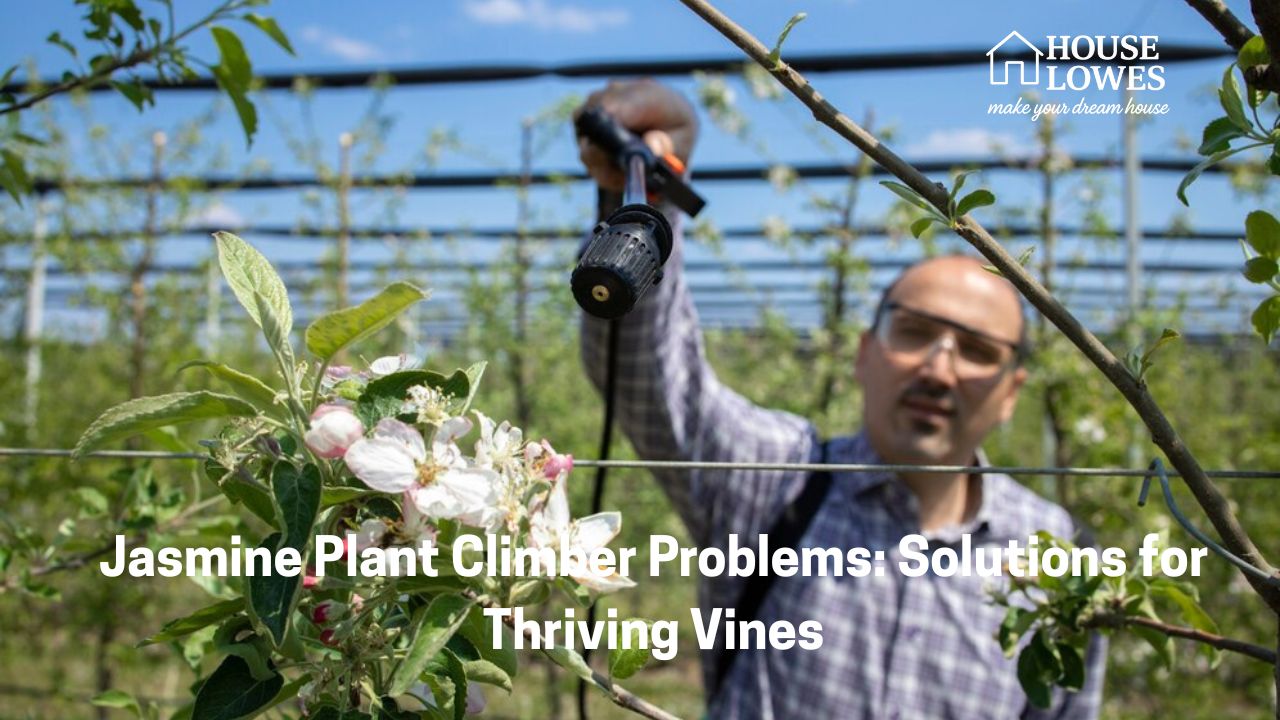Introduction to Jasmine Plant Climber Problems
There’s something magical about jasmine plants, isn’t there? Those sweet-smelling flowers, cascading vines, and the way they bring life to any garden. But, if you’ve tried growing a jasmine climber, you’d know it’s not all sunshine and roses. These plants, as stunning as they are, come with their fair share of challenges. Don’t worry; you’re not alone. If you’ve stumbled upon this guide while pulling your hair out because your jasmine isn’t behaving, you’re about to find all the solutions you need.

First of all, growing a jasmine climber is like training a very stubborn pet. It’s beautiful, vibrant, and can fill your space with fragrance, but it has a mind of its own. Whether it’s battling diseases, fighting off pests, or just refusing to bloom, there’s always something going on. That’s why understanding jasmine plant climber problems is the first step toward making these plants thrive.
Now, sit back, get comfy, and let’s take this jasmine problem-solving adventure step by step. By the end of this guide, you’ll not only have healthier plants but probably be more in love with your jasmine than you already are.
What Makes Jasmine Climbers Special?
Before we get into the nitty-gritty, can we just take a moment to appreciate how amazing jasmine plants are? They’re like nature’s perfume bottle, filling the air with sweet, intoxicating fragrances. Not to mention, their vines can transform boring walls, fences, or arches into lush, green masterpieces. Jasmine isn’t just a plant; it’s a vibe.
There are so many varieties of jasmine climbers, from star jasmine (Confederate jasmine) to common jasmine (Jasminum officinale). Each has its quirks, but they all share one thing in common – they’re climbers. These plants aren’t designed to sit pretty in a pot (although some do that too); they’re made to climb, stretch, and create drama with their growth. And this dramatic growth is where most people run into trouble.
Whether it’s white jasmine or the tropical Arabian jasmine, these plants can be demanding divas. A little too much water? Drama. Too much sun? More drama. They need a balance, and once you find it, they reward you by turning your garden into a slice of heaven.
The Challenges of Growing Jasmine Climbers
Now, here’s the thing about jasmine climbers. They’re not necessarily high-maintenance, but they’re picky. They’ll thrive beautifully if you meet their needs but throw a tantrum (read as “leaf issues or dying vines”) if you don’t.
Here’s what most people deal with:
- Diseases
Jasmine plants can be affected by diseases like powdery mildew, rust, and even root rot. What’s frustrating is that these problems often pop up out of nowhere. - Pests
Oh, the joy of waking up to find aphids having an all-you-can-eat buffet on your jasmine or spider mites setting up camp. Pests love these climbers as much as we do. - Watering Woes
Jasmine plants are not fans of extremes. Overwater them, and they get soggy roots. Underwater them, and their leaves turn all crispy and sad-looking. Finding the right watering routine is an art. - Weak and Leggy Growth
When these plants don’t get the right amount of sunlight, they stretch themselves thin trying to find it, leaving you with long, weak, and sparse vines. - Overgrowth
On the flip side, give your jasmine climber all the love but forget to prune, and you’ll be fighting off a jungle. These vines grow fast and get out of control if left unchecked.
But here’s the good news – all these problems have simple solutions. Yes, even that stubborn overgrown climber threatening to take over your pergola.
Understanding Your Jasmine Plant
Here’s why jasmine climbers can sometimes misbehave. They’re living things with specific needs. They don’t just grow anywhere and in any condition. They respond to their environment, so if something’s off, they’ll show you through yellowing leaves, pest infestations, or refusal to flower.
Here’s what jasmine plants need to thrive:
- Plenty of sunlight
Most jasmine varieties need at least 6-8 hours of sunlight. Too little sun, and they start sulking (a.k.a., they stop blooming). If there isn’t sufficient light, consider using LED grow lights. - Well-draining soil
Jasmine hates wet feet. If the soil stays soggy, root rot sets in. - Supportive structures
These are climbers, remember? They need trellises, arches, or walls to climb on. - Seasonal care
These plants grow more actively during spring and summer. That’s when you feed them, water them regularly, and prune.
Now that you know the basics, you’re in a better position to fix what’s wrong. Keep reading, and we’ll tackle each common problem one by one. Think of it as a troubleshooting guide for your jasmine.
Addressing Common Problems in Jasmine Climbers
We’ve already identified the typical challenges jasmine plants face, like pests, diseases, and growth issues. To help you better understand how to keep your climber thriving, I’ll break down a few of the most common problems.
1. Diseases
The dreaded powdery mildew is like an uninvited guest. It appears as white, dusty spots on the leaves. Rust creates orange or brown patches, while root rot will cause the base to become mushy and smelly. Sounds delightful, right?
Solution: Use a fungicide, avoid overhead watering, and improve air circulation around the plant. Always check the soil drainage to prevent soggy roots.
2. Pests
If you notice tiny green insects or sticky residue on leaves, it’s likely aphids. If there’s webbing everywhere, say hello to spider mites. These pests love jasmine plants.
Solution: Spray with insecticidal soap or a neem oil solution. For spider mites, increase humidity – they hate that.
3. Watering Problems
Jasmine plants are a bit like Goldilocks when it comes to water. They need just the right amount. Too much or too little, and they throw a fit.
Solution: Water your plant when the top inch of soil feels dry. During summer, you’ll need to do this more often.
4. Overgrowth or Weak Growth
An overgrown jasmine plant can block pathways and make maintenance a nightmare. Weak growth, on the other hand, looks sparse and unhealthy.
Solution: Regular pruning is a must. Tame the overgrowth after flowering, and ensure the plant gets enough sunlight and nutrients.
Bonus Tip: A little love goes a long way with jasmine. Chatting with the plant, while optional, certainly doesn’t hurt!
How to Prevent Problems Before They Start
Wouldn’t it be better if we could avoid these problems entirely? Here’s how:
- Provide good airflow by spacing the vines and using a sturdy support structure.
- Mulch the base of the plant but avoid piling it directly against the stem.
- Feed your climber a balanced fertilizer every 6-8 weeks in spring and summer.
By being proactive, you’ll find that jasmine climber problems become much less frequent.
FAQ: Clearing Your Jasmine Doubts
Q1. Why is my jasmine plant not blooming?
Your plant likely isn’t getting enough sunlight. Or, it could be over-fertilized with too much nitrogen, encouraging leaves but no flowers.
Q2. How often should I prune my jasmine climber?
Right after flowering ends is the best time. Prune once or twice a year to maintain its shape and health.
Q3. Can jasmine survive indoors?
Yes, but it needs bright, indirect light and good ventilation to thrive indoors.
Q4. What’s the best support for jasmine vines?
Trellises, pergolas, or even fences work well. Just ensure the structure is sturdy enough for their rapid growth.
Q5. How can I naturally get rid of pests on my jasmine?
Use homemade remedies like water mixed with a few drops of dish soap. Spray it on the affected areas to discourage pests.
Wrapping Up Section 1
There you have it, a comprehensive start to tackling jasmine climber problems. Remember, the key is understanding your plant’s needs and addressing issues before they snowball into bigger problems. With a little care and attention, your jasmine climber can become the star of your garden.
Get ready to discover specific solutions to each problem in the next section! You’re on your way to becoming the ultimate jasmine expert!







